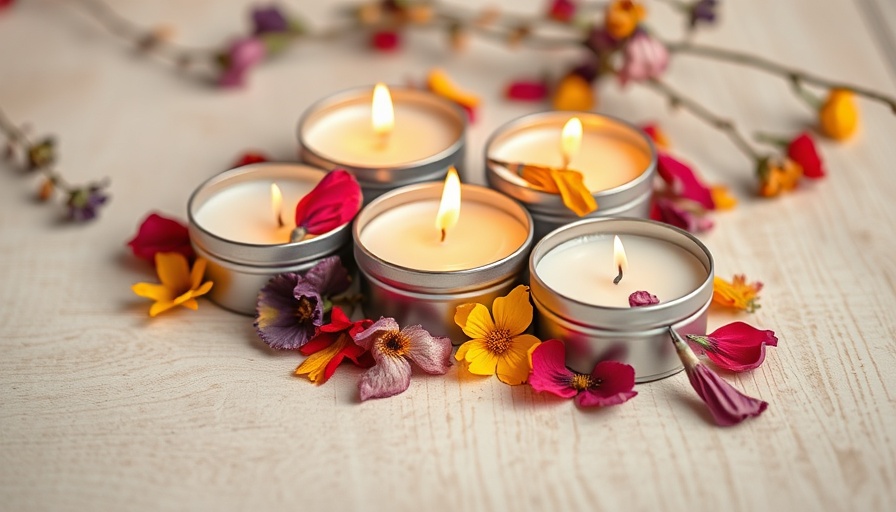
Are Flowers Safe to Use in Candles? Unpacking the Myth
Crafting artisanal candles infused with dried flowers has become a delightful DIY trend, but safety should always precede aesthetics. Many novice candle-makers, influenced by social media platforms like TikTok and Pinterest, often overlook vital safety protocols. It's essential to understand not only the beauty but also the potential hazards that dried florals may bring when ignited.
Choosing the Right Floral Selections for Candles
Only dried flowers should ever grace the top of your candles. Fresh flowers retain moisture, which can lead to unwanted effects when surrounded by hot wax. It’s recommended to select small, broken-up floral components rather than whole blossoms. Choosing botanicals that are known for their aesthetic appeal as well as their safety is crucial. Flowers like lavender, chamomile, and rose petals not only create visual beauty but also yield subtle fragrances when burned.
Technical Tips for Adding Flowers to Candles
When incorporating dried flowers into your candle-making process, consider their placement and quantity. Adding large petals or too many flowers can create fire hazards. A light touch is best—think elegant touches rather than dense floral arrangements. Ensure that your flowers remain above the wick level to avoid any issues during the melting process.
The Threat of Fire: Lessons from Experience
As a passionate candle-maker, I have seen firsthand the potential dangers. In one notable instance, a fellow creator dared to insert whole pinecones into their candle. The result? A fiery spectacle that sent a jolt of fear through the room! With caution and education, we can all avoid such dramatic mishaps. Remember, safety is paramount when along with beauty.
Gift-giving with Safety in Mind
While the allure of gifting beautifully adorned candles can be tempting, one must weigh the risks involved. I advise keeping your botanical creations for personal enjoyment. They look gorgeous on your shelves, and you can control their burn. For gifts, consider creating herbal wax melts, which can provide the same aesthetic appeal without the added fire risks.
In Conclusion: A Call for Safe Candle Crafting
As we embrace the artistry of candle making, let’s also champion the safety of our cherished homes. Understanding the risks associated with floral additions to your candles can empower safer and more rewarding crafting experiences. Share these insights with fellow DIY enthusiasts, and together, let’s elevate our candle-making game—safely!
 Add Row
Add Row  Add
Add 




Write A Comment